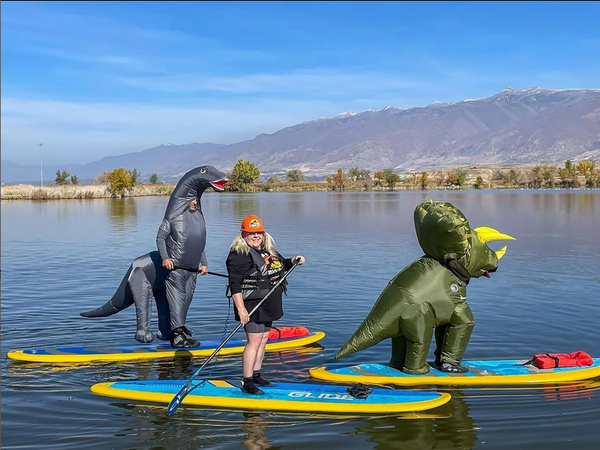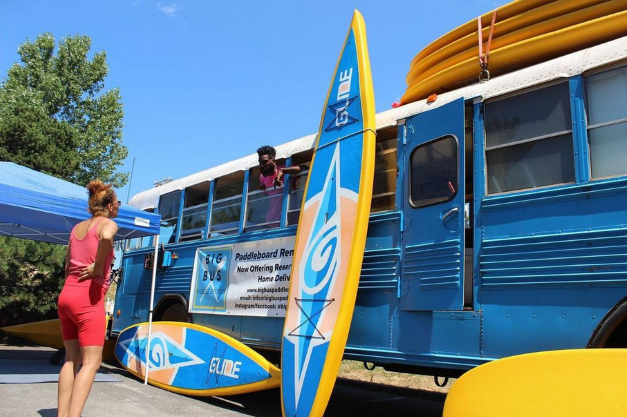
Too Heavy to Paddle Board? Find Your Fit & Best Board
You’re not too heavy to paddle board—you just need the right board.
Think total load (you + gear), then pick enough volume and width for stable trim and a dry deck.
High-capacity iSUPs (400–500 lb) excel for bigger loads or add-ons like coolers, dogs, or kids.
Stand over the handle, adjust fore–aft until the nose/tail ride level, inflate to target PSI, and keep heavy items centered and low.
With proper sizing and setup, sessions feel smooth, safe, and fun—and you can always add a faster touring board once you’re comfortable.
Table of contents
Short answer: you’re not too heavy to paddle board. You just need a board (and setup) that matches your total load—your body + gear + water conditions. With the right volume, width, and construction, SUP can feel stable, efficient, and fun at any size.

What “weight limit” really means
-
Capacity is total load: your weight plus hydration, cooler, PFD, pump, fishing kit, kid, pup—everything on deck.
-
Stability lives in volume + width: more liters and a wider stance keep the rails high and the deck dry.
-
Construction matters: quality iSUPs distribute load evenly and resist flex; good hard boards feel reactive but need the right volume.
Typical ranges: many all-around SUPs list 200–350 lb capacities; higher-capacity iSUPs easily reach 400–500 lb. (E.g., Glide O2 Angler up to 500 lb; several Glide inflatables rated ~400 lb.)
A simple way to choose your board
1) Add it up: body weight + regular gear (and passengers/pets).
2) Pick your water: flat lakes allow slightly lower volume; chop/boat wake favors more.
3) Start stable, then tune: begin with generous width/volume; refine later for speed/feel.
Quick sizing cues
-
Width:
-
Newer/larger paddlers or extra gear: 33–36"
-
Fitness/touring once confident: 31–33"
-
-
Length:
-
All-around stability & space: 10'6"–11'6"
-
Touring/glide for longer days: 12'6"
-
-
Thickness (iSUP): 6" for higher capacity and stiffness.
-
Deck pad: full-length, cushy, and grippy = happier feet, better balance.
-
Tie-downs: nose and tail bungees spread weight safely.
iSUP vs. hard board for bigger loads
Inflatable SUP (iSUP) advantages
-
High capacity (often 400–500 lb), durable rails, easier storage/transport, forgiving on wake and docks.
-
Inflate to the recommended PSI for max stiffness under load.
Hard board advantages
-
Livelier glide/acceleration at matched volume; great if you transport easily and want a reactive feel.

Trim, stance, and paddle tips for heavier paddlers
-
Trim (fore–aft): Stand with the handle between your feet. If the nose plows, step back 1–2". If the tail drags, step forward.
-
Stance: Feet hip–shoulder width, soft knees, eyes on horizon; micro-shifts prevent foot fatigue.
-
Leash + PFD: non-negotiable. Match leash to venue (coiled flat/open water; quick-release waist for rivers; straight for surf).
-
Paddle length: about 6–8" (15–20 cm) above height; adjust for board thickness and cadence.
-
Blade size: mid-size for cadence without shoulder strain.
Use-case picks (so the board helps you, not fights you)
-
Beginner confidence / general fun: wide all-around iSUP (33–35"), 6" thick, big deck pad, nose/tail bungees.
-
Fishing / cooler / kid or dog aboard: high-capacity iSUP (400–500 lb), wide stance, shallow or river fin for skinny water.
-
Fitness / distance once steady: higher-volume touring shape (12'6"), ~31–33" wide; slide fin back for tracking.
-
Yoga / chill days: stable rectangle of deck pad, soft rails, wide nose for balance drills.
When to size up (and why it feels better)
-
You feel constant rail-to-rail wobble in light chop.
-
Water regularly washes over your feet while standing neutral.
-
You can’t carry your normal gear without nose plow or tail squat.
Sizing up adds stability, dry deck, and lower heart rate at the same speed—more fun, longer sessions.
Don’t forget the rest of the system
-
Fin choice: Touring/dolphin fin slid back for straight lines; forward for easier turns. River/shallow fins prevent hang-ups.
-
Pump & PSI: Under-inflation = flex. Hit target PSI for full capacity.
-
Pack weight low & centered: Heavy items near the handle; split front/back bungees to keep trim even.
Try before you buy (smart progression)
-
Rent or demo a couple widths/lengths on the same day and same water.
-
Bring your usual gear to test true load.
-
Note stability in flat and with boat wake; pick the one that keeps your knees soft and breathing easy.

Final Thoughts - Too Heavy to Paddle Board?
The question isn’t “Am I too heavy to paddle board?”—it’s “Which board will carry me comfortably and confidently?” Choose enough volume and width, inflate to proper PSI, center your load, and let the water do the rest. As comfort grows, you can always explore faster shapes. Start with fit and stability; speed and style can come later.
FAQs
Can I paddle with a friend, kid, or dog on the same board?
Yes—sum everyone’s weight + gear and choose a high-capacity iSUP with ample deck pad and tie-downs.
Why does my board feel slow or soggy?
Often under-inflation (iSUP), too little volume, or weight placed too far forward. Inflate fully, re-trim, or size up.
Is wider always better?
Wider is more stable, but overly wide can feel sluggish. Aim for the narrowest width that still feels relaxed in light chop.
Do I need a special fin?
For capacity, no—but placement matters. Slide the fin back for better tracking under load.
Will I outgrow a high-capacity board?
Not necessarily. Keep it for fishing, family days, or choppy conditions. You can add a faster touring board later.
Hard board or inflatable if I’m near the limit?
Both work. Many heavier paddlers prefer quality iSUPs for capacity and forgiveness; hard boards excel if matched volume is available.
My feet go numb—help?
Shift weight every few minutes, soften knees, and look up (not down). A cushier deck pad helps a lot.
What PSI should I use?
Follow the board’s recommended PSI. Capacity and stiffness drop fast below target pressure.
Do bigger paddlers need a different paddle?
A mid-size blade and light shaft protect shoulders and help cadence. Adjust length for board thickness.
I’m nervous about falling. Any tips?
Practice close to shore, wear a PFD and leash, and start on calm mornings. A planted blade is your best “third point” for balance.





